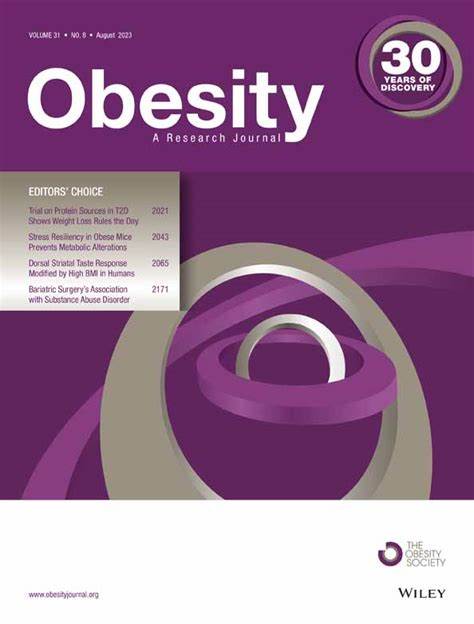Dietary Macronutrient Composition and Protein Concentration for Weight Loss Maintenance
Abstract
Objective
To examine the association between dietary macronutrient composition and 12-month weight loss maintenance (WLM) in adults who achieved initial weight loss (≥ 5%).
Methods
This prospective cohort analysis used 12-month follow-up data from the Navigating to a Healthy Weight trial. Macronutrient composition (%) was assessed using a 4-day, 24-h dietary recall. Food sources were categorized as discretionary foods, lean meat, vegetables, fruit, grains, and dairy. Primary outcomes included 12-month changes in body weight, fat mass index (FMI), waist-to-height ratio (WHtR), and hip-to-height ratio (HHtR). A nutritional geometry approach was used to examine individual and interactive associations of macronutrient intake, visualizing as response surfaces.
Results
Among 1518 participants (69.8% women; mean age 45 ± 12 years), mean macronutrient composition was 20.6% protein, 33.8% fat, and 43.1% carbohydrate. Protein energy percentage was inversely associated with energy intake (β: −0.33; 95% CI: −0.39, −0.27). Response surfaces revealed that lower proportional energy from protein, diluted by high fat and/or carbohydrate, was associated with higher total energy intake and greater 12-month increases in body weight, WHtR, and HHtR, but not FMI. Consumption of discretionary food, not other food sources, increased energy intake by reducing proportional energy from protein.
Conclusions
Maintaining dietary proportional energy from protein, particularly by limiting discretionary food consumption, was associated with reduced energy intake and improved WLM.


 求助内容:
求助内容: 应助结果提醒方式:
应助结果提醒方式:


